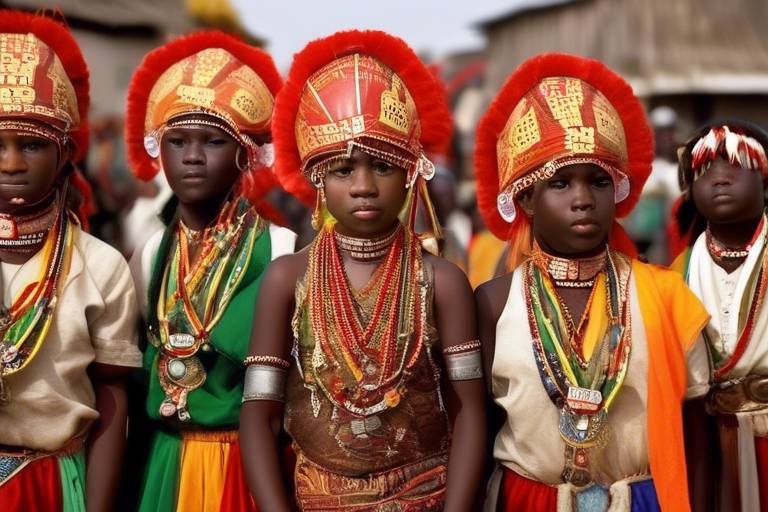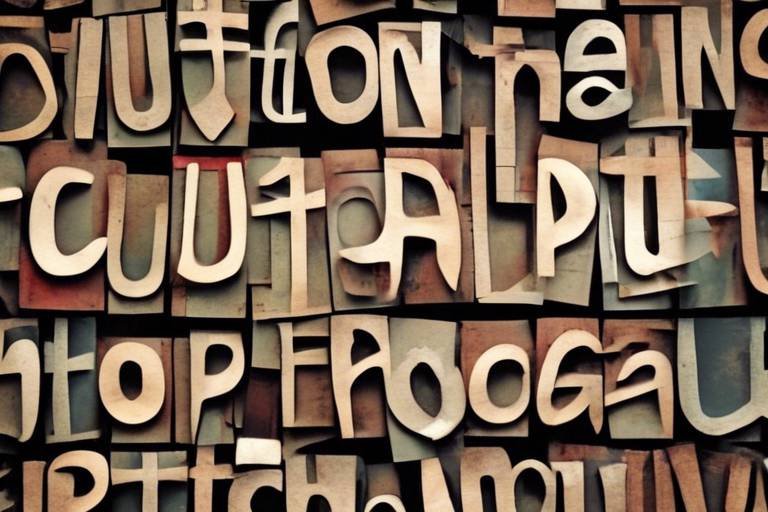How to Document and Preserve Local Traditions
Preserving local traditions is crucial for maintaining the cultural richness and identity of a community. By documenting these unique practices, stories, and rituals, we ensure that they are not lost to time and can be passed down to future generations. This process involves a combination of understanding the significance of these traditions, overcoming challenges in preservation, and actively involving the community in the documentation efforts.
One of the key aspects of preserving local traditions is recognizing their significance in shaping the cultural, historical, and social fabric of a community. These traditions serve as a link to the past, connecting us to our roots and providing a sense of belonging and continuity. By documenting these traditions, we are essentially preserving a piece of history that defines who we are as a community.
However, the task of preservation comes with its own set of challenges. Globalization and modernization pose threats to traditional practices, while the lack of resources and support can hinder documentation efforts. It is essential to address these obstacles and find innovative ways to safeguard local traditions from being lost or forgotten.
Technology plays a crucial role in the preservation of local traditions, offering digital tools and platforms to archive and share cultural practices. By utilizing these resources, we can ensure that traditional knowledge is accessible to a wider audience and can be preserved for future generations. Additionally, community involvement is key in this process, as active participation ensures that traditions are documented with authenticity and care.
Effective documentation practices involve a variety of techniques, including oral histories, visual recordings, and written accounts. Collaborating with experts such as cultural anthropologists and historians can provide valuable insights into the proper interpretation and preservation of local traditions. Education and awareness initiatives also play a vital role in highlighting the importance of preserving these traditions and encouraging active engagement within the community.
In conclusion, documenting and preserving local traditions is not just about safeguarding the past; it is about securing the cultural heritage and identity of a community for the future. By taking proactive steps to record and pass down these traditions, we ensure that their legacy endures and continues to enrich the lives of generations to come.

Understanding the Significance
Exploring methods and importance of preserving unique cultural practices and traditions within communities to ensure their longevity and significance for future generations.
Recognizing the cultural, historical, and social value of local traditions is crucial in maintaining identity and fostering a sense of belonging among community members. These traditions serve as the threads that weave the fabric of a community together, creating a shared heritage that connects past, present, and future generations. They provide a sense of continuity and belonging, grounding individuals in their roots and shaping their collective identity.
Addressing the obstacles and threats faced in documenting and safeguarding local traditions is essential to ensure their survival. Globalization and modernization pose significant challenges, as traditional practices may be overshadowed or forgotten in the face of rapid societal changes. Additionally, the lack of resources, both financial and human, can hinder preservation efforts, making it difficult to allocate the necessary time and expertise to document and protect these valuable cultural assets.
Utilizing digital tools and platforms plays a vital role in the preservation of local traditions. Technology enables the recording, archiving, and sharing of traditional practices, stories, and rituals on a broader scale, making them more accessible to a wider audience. Digital platforms provide a means to not only document these traditions but also to engage with a global community interested in cultural preservation.
Emphasizing the importance of active participation and engagement of community members is key to the successful documentation and passing down of local traditions to future generations. When the community is involved in the preservation process, there is a sense of ownership and responsibility that ensures these traditions are upheld and celebrated for years to come.
Exploring effective strategies and techniques for accurately documenting and preserving local traditions is essential for their longevity. Oral histories, visual recordings, and written accounts are valuable tools in capturing the essence of these traditions and ensuring their authenticity is preserved for future generations to experience and appreciate.
Engaging with cultural anthropologists, historians, and preservationists is crucial to ensure the proper documentation and interpretation of local traditions with respect and authenticity. Experts bring their knowledge and expertise to the table, providing valuable insights and guidance in preserving these cultural treasures.
Promoting educational initiatives and awareness campaigns is vital in highlighting the significance of preserving local traditions. By raising awareness about the importance of cultural heritage, communities can garner support and encourage active involvement in preservation efforts, ensuring that these traditions are not lost to time.
Discussing the long-term benefits of documenting and safeguarding local traditions is essential for the cultural heritage and identity of communities. By preserving these traditions, communities ensure that their legacy endures, passing down a rich tapestry of cultural practices and beliefs to future generations who will continue to cherish and uphold them.

Challenges in Preservation
Exploring methods and importance of preserving unique cultural practices and traditions within communities to ensure their longevity and significance for future generations.
Recognizing the cultural, historical, and social value of local traditions in maintaining identity and fostering a sense of belonging among community members.
Addressing the obstacles and threats faced in documenting and safeguarding local traditions, including globalization, modernization, and lack of resources.
Utilizing digital tools and platforms to record, archive, and share traditional practices, stories, and rituals for wider accessibility and preservation efforts.
Emphasizing the importance of active participation and engagement of community members in documenting and passing down local traditions to future generations.
Exploring effective strategies and techniques for accurately documenting and preserving local traditions, such as oral histories, visual recordings, and written accounts.
Engaging with cultural anthropologists, historians, and preservationists to ensure proper documentation and interpretation of local traditions with respect and authenticity.
Promoting educational initiatives and awareness campaigns to highlight the significance of preserving local traditions and encourage active involvement in preservation efforts.
Discussing the long-term benefits of documenting and safeguarding local traditions for the cultural heritage and identity of communities, ensuring their legacy endures.

Technology's Role
Exploring methods and importance of preserving unique cultural practices and traditions within communities to ensure their longevity and significance for future generations.
Recognizing the cultural, historical, and social value of local traditions in maintaining identity and fostering a sense of belonging among community members.
Addressing the obstacles and threats faced in documenting and safeguarding local traditions, including globalization, modernization, and lack of resources.
Utilizing digital tools and platforms to record, archive, and share traditional practices, stories, and rituals for wider accessibility and preservation efforts.
Technology plays a crucial role in the preservation of local traditions by providing innovative ways to document and share cultural practices. Digital tools enable communities to capture and store traditional knowledge, stories, and rituals in formats that can be easily accessed and shared with a global audience. Through the use of technology, local traditions can be preserved for future generations, ensuring their legacy endures.
Emphasizing the importance of active participation and engagement of community members in documenting and passing down local traditions to future generations.
Exploring effective strategies and techniques for accurately documenting and preserving local traditions, such as oral histories, visual recordings, and written accounts.
Engaging with cultural anthropologists, historians, and preservationists to ensure proper documentation and interpretation of local traditions with respect and authenticity.
Promoting educational initiatives and awareness campaigns to highlight the significance of preserving local traditions and encourage active involvement in preservation efforts.
Discussing the long-term benefits of documenting and safeguarding local traditions for the cultural heritage and identity of communities, ensuring their legacy endures.

Community Involvement
Exploring methods and importance of preserving unique cultural practices and traditions within communities to ensure their longevity and significance for future generations.
Recognizing the cultural, historical, and social value of local traditions in maintaining identity and fostering a sense of belonging among community members.
Addressing the obstacles and threats faced in documenting and safeguarding local traditions, including globalization, modernization, and lack of resources.
Utilizing digital tools and platforms to record, archive, and share traditional practices, stories, and rituals for wider accessibility and preservation efforts.
Community involvement is crucial in the preservation of local traditions. When community members actively participate in documenting and passing down traditions, the cultural heritage becomes a collective responsibility. By engaging with the community, traditions are not only preserved but also celebrated and cherished for generations to come.
Exploring effective strategies and techniques for accurately documenting and preserving local traditions, such as oral histories, visual recordings, and written accounts.
Engaging with cultural anthropologists, historians, and preservationists is essential to ensure the proper documentation and interpretation of local traditions with respect and authenticity. Collaborating with experts brings expertise and insight that enriches the preservation process.
Promoting educational initiatives and awareness campaigns is key to highlighting the significance of preserving local traditions. By educating the community about the value of their traditions and raising awareness about the threats they face, active involvement in preservation efforts can be encouraged.
Discussing the long-term benefits of documenting and safeguarding local traditions for the cultural heritage and identity of communities, ensuring their legacy endures.

Best Practices in Documentation
Exploring methods and importance of preserving unique cultural practices and traditions within communities to ensure their longevity and significance for future generations.
Recognizing the cultural, historical, and social value of local traditions in maintaining identity and fostering a sense of belonging among community members.
Addressing the obstacles and threats faced in documenting and safeguarding local traditions, including globalization, modernization, and lack of resources.
Utilizing digital tools and platforms to record, archive, and share traditional practices, stories, and rituals for wider accessibility and preservation efforts.
Emphasizing the importance of active participation and engagement of community members in documenting and passing down local traditions to future generations.
When it comes to documenting local traditions, it is essential to employ effective strategies that ensure accuracy and preservation. One of the best practices is to utilize a combination of oral histories, visual recordings, and written accounts to capture the essence of the tradition comprehensively. By incorporating multiple forms of documentation, a more holistic view of the tradition can be preserved for future generations to appreciate and learn from.
Engaging with cultural anthropologists, historians, and preservationists is crucial in ensuring the proper documentation and interpretation of local traditions with respect and authenticity. Collaborating with experts can provide valuable insights and expertise that contribute to the accurate preservation of traditions for posterity.
Promoting educational initiatives and awareness campaigns plays a significant role in highlighting the importance of preserving local traditions. By raising awareness about the cultural significance of these traditions and educating the community on the value of preservation, more individuals can actively participate in efforts to document and safeguard local practices for future generations.
Discussing the long-term benefits of documenting and safeguarding local traditions for the cultural heritage and identity of communities, ensuring their legacy endures.

Collaboration with Experts
When it comes to preserving local traditions, collaborating with experts in various fields is crucial to ensure the accurate documentation and interpretation of cultural practices. Cultural anthropologists, historians, and preservationists play a vital role in providing valuable insights and expertise in understanding the significance of traditional rituals, customs, and stories.
By working hand in hand with experts, communities can gain a deeper understanding of their own heritage and ensure that the documentation process is conducted with respect and authenticity. These collaborations help bridge the gap between past traditions and present-day practices, creating a seamless transition for future generations to appreciate and learn from.
Experts bring a wealth of knowledge and experience to the table, offering guidance on the best practices for preserving local traditions. Their involvement ensures that the documentation process is thorough and comprehensive, capturing the essence of each tradition in its true form. Through collaboration, communities can benefit from the expertise of professionals who are dedicated to safeguarding cultural heritage for years to come.

Education and Awareness
Educating and raising awareness about the importance of preserving local traditions is crucial for ensuring their continuity and relevance in today's rapidly changing world. By engaging in educational initiatives and awareness campaigns, communities can highlight the significance of their cultural practices and encourage active participation in preservation efforts.
One effective approach is to collaborate with schools and educational institutions to integrate local traditions into curricula, providing students with opportunities to learn about and appreciate their cultural heritage. This not only fosters a sense of pride and belonging among the younger generation but also ensures that traditional knowledge is passed down to future heirs.
Furthermore, organizing cultural events, workshops, and exhibitions can serve as platforms for showcasing local traditions to a wider audience, generating interest and support for preservation endeavors. By inviting community members to participate in these activities, a sense of ownership and responsibility towards safeguarding their heritage is instilled.
Creating online resources, such as websites, social media pages, and digital archives, can also enhance outreach and accessibility to information about local traditions. These platforms can serve as repositories for historical narratives, traditional practices, and personal stories, allowing individuals from diverse backgrounds to engage with and learn about unique cultural expressions.

Preservation for Future Generations
Exploring methods and importance of preserving unique cultural practices and traditions within communities to ensure their longevity and significance for future generations.
Recognizing the cultural, historical, and social value of local traditions in maintaining identity and fostering a sense of belonging among community members.
Addressing the obstacles and threats faced in documenting and safeguarding local traditions, including globalization, modernization, and lack of resources.
Utilizing digital tools and platforms to record, archive, and share traditional practices, stories, and rituals for wider accessibility and preservation efforts.
Emphasizing the importance of active participation and engagement of community members in documenting and passing down local traditions to future generations.
Exploring effective strategies and techniques for accurately documenting and preserving local traditions, such as oral histories, visual recordings, and written accounts.
Engaging with cultural anthropologists, historians, and preservationists to ensure proper documentation and interpretation of local traditions with respect and authenticity.
Promoting educational initiatives and awareness campaigns to highlight the significance of preserving local traditions and encourage active involvement in preservation efforts.
Preserving local traditions is not just about the present; it's about securing a rich heritage for the future. By documenting and safeguarding these unique cultural practices, we are ensuring that the legacy of our communities endures for generations to come. Just like planting a tree today for the shade of tomorrow, preserving local traditions is an investment in the cultural identity and heritage of our descendants.
Frequently Asked Questions
- What are local traditions?
Local traditions are customs, practices, beliefs, and rituals that are passed down from generation to generation within a specific community or region. These traditions play a vital role in shaping the cultural identity and heritage of a group of people.
- Why is it important to preserve local traditions?
Preserving local traditions is crucial for maintaining the unique identity and history of a community. It fosters a sense of belonging, strengthens social bonds, and ensures that future generations can learn about their heritage and cultural practices.
- How can technology aid in documenting local traditions?
Technology can help in documenting local traditions by providing platforms for recording and sharing traditional practices digitally. This enables wider accessibility, archiving of stories and rituals, and ensures that these traditions are not lost to time.
- What role does community involvement play in preserving local traditions?
Community involvement is essential in preserving local traditions as it ensures active participation in documenting and passing down cultural practices. When community members are engaged, there is a greater sense of ownership and commitment to preserving their heritage.
- How can collaboration with experts benefit the preservation of local traditions?
Collaborating with cultural anthropologists, historians, and preservationists can provide valuable insights and expertise in properly documenting and interpreting local traditions. This collaboration ensures that traditions are recorded with accuracy, respect, and authenticity.


















